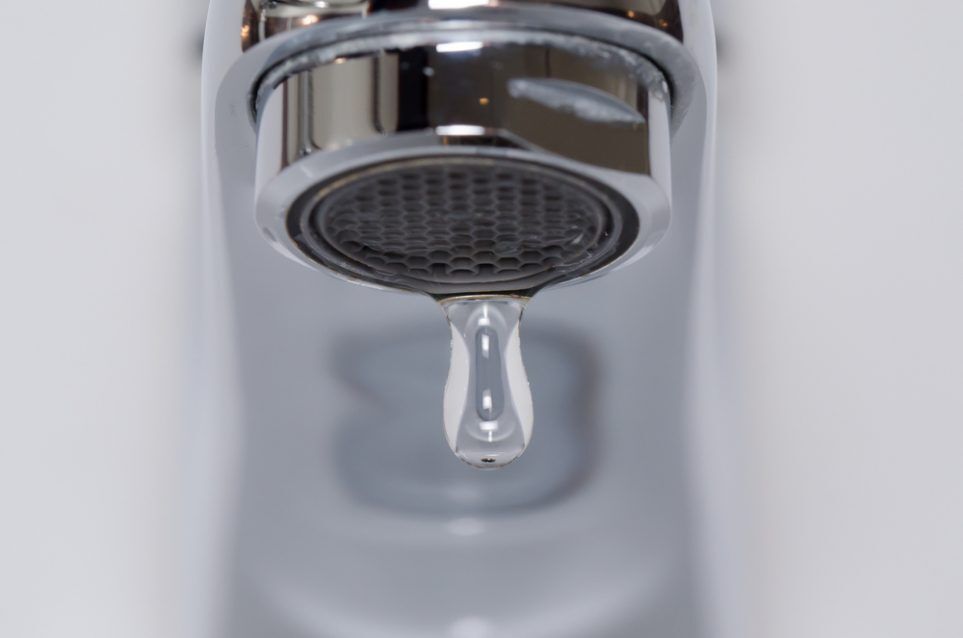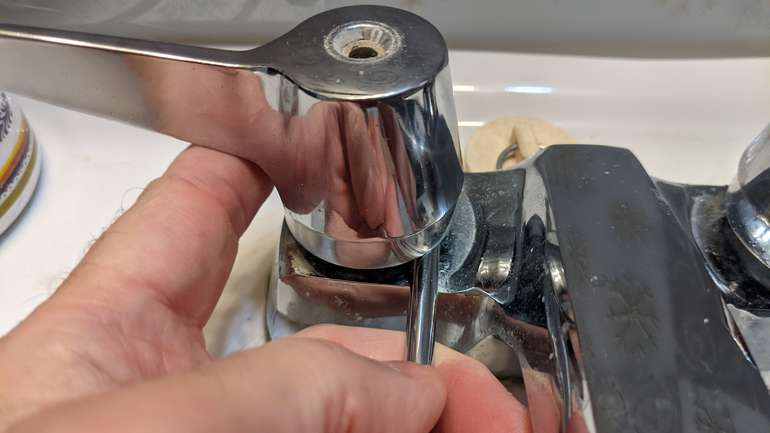Exploring the Importance of Correcting a Malfunctioning Faucet
Exploring the Importance of Correcting a Malfunctioning Faucet
Blog Article
This article in the next paragraphs on the subject of Water Dripping from Faucet: Why and How to Fix is indeed attention-grabbing. Read it for yourself and see what you think about it.

Trickling taps could seem like a small hassle, however their effect goes beyond simply the inconvenience of the audio. From wasting water to sustaining unnecessary financial prices and health risks, disregarding a dripping faucet can bring about various repercussions. In this article, we'll look into why it's essential to resolve this usual household problem quickly and successfully.
Wastefulness of Water
Ecological Effect
Leaking taps add dramatically to water wastefulness. According to the Epa (EPA), a single tap trickling at one drip per second can waste more than 3,000 gallons of water each year. This not only pressures water sources however also impacts ecosystems and wildlife based on them.
Financial Prices
Enhanced Water Expenses
Beyond the environmental impact, dripping taps can blow up water bills considerably. The collected wastage with time equates into higher utility costs, which could have been avoided with prompt repair work.
Prospective Home Damage
In addition, extended dripping can bring about damage to fixtures and surfaces bordering the tap. Water accumulation can cause discoloration, deterioration, and even structural problems if left unattended, causing added repair service prices.
Wellness Worries
Mold And Mildew and Mold Development
The constant presence of wetness from a trickling tap develops a perfect atmosphere for mold and mold development. These fungi not only jeopardize indoor air high quality yet also pose health and wellness threats, especially for people with breathing conditions or allergies.
Waterborne Diseases
Stagnant water in leaking faucets can end up being a breeding place for germs and various other virus, increasing the threat of waterborne illness. Impurities such as Legionella germs grow in stagnant water, potentially causing severe ailments when consumed or inhaled.
Do it yourself vs. Specialist Repair work
Pros and Cons of Do It Yourself Repair Service
While some might attempt to take care of a dripping tap themselves, do it yourself repair services include their own collection of challenges. Without appropriate expertise and tools, do it yourself efforts can intensify the concern or result in incomplete repair services, prolonging the issue.
Benefits of Hiring a Professional Plumber
Employing an expert plumber makes certain that the underlying cause of the dripping faucet is dealt with efficiently. Plumbing professionals possess the expertise and devices to identify and repair faucet problems effectively, saving time and reducing the danger of additional damages.
Step-by-Step Guide to Dealing With a Dripping Tap
Tools Needed
Prior to trying to deal with a dripping faucet, collect the essential tools, consisting of a flexible wrench, screwdrivers, substitute parts (such as washers or cartridges), and plumber's tape.
Usual Faucet Issues and Their Solutions
Identify the kind of faucet and the details concern causing the drip. Usual issues include damaged washing machines, rusty shutoff seats, or damaged O-rings. Refer to supplier instructions or on the internet tutorials for detailed assistance on repair services.
Safety nets
Regular Upkeep Tips
To avoid leaking faucets, execute routine maintenance such as cleaning aerators, checking for leakages, and changing worn-out parts quickly. In addition, take into consideration setting up water-saving devices or upgrading to extra efficient fixtures.
Significance of Prompt Fixes
Addressing dripping taps as quickly as they're observed avoids additional water wastage and prospective damage, eventually conserving both water and money over time.
Impact on Residential Or Commercial Property Value
Perception of Well-Maintained Residential Or Commercial Property
Preserving a building in good condition, consisting of resolving maintenance concerns like dripping taps, enhances its perceived worth and desirability among prospective purchasers or renters.
Influence on Resale Worth
Qualities with well-kept plumbing components, consisting of taps, command higher resale worths in the realty market. Addressing dripping taps can add to a positive perception during home assessments and negotiations.
Ecological Responsibility
Individual Contribution to Conservation
Taking duty for taking care of dripping taps straightens with wider initiatives towards water conservation and environmental sustainability. Every person's actions collectively make a substantial effect on protecting priceless resources.
Lasting Living Practices
By prioritizing prompt repair work and taking on water-saving habits, individuals contribute to lasting living techniques that benefit both present and future generations.
Conclusion
Resolving a trickling faucet exceeds simple comfort; it's a necessary action towards conserving water, lowering economic prices, and securing wellness and home. Whether via DIY repair services or specialist support, acting to deal with trickling taps is a little yet impactful method to promote liable stewardship of resources and contribute to a healthier, a lot more sustainable future.
How to Fix a Dripping or Leaky Faucet
A leaking faucet is one of the most common problems that homeowners encounter, but it being commonplace doesn’t make it any less annoying. The constant drip drip drip of a leaking bathtub faucet, showerhead, or sink tap can disturb your home’s serenity. Left neglected, a dripping faucet can also result in higher water bills and discoloration or mold growth in your sink or plumbing fixtures.
Fortunately, you don’t have to be a trained plumber to know how to stop a dripping faucet. With some basic tools, replacement parts, and a little patience, leaky faucet repair is a breeze. In this article, we’ll explain what causes dripping faucets and how you can fix them.
What Causes a Leaking Faucet?
Kitchen and bathroom faucets come in all manner of designs, but most involve some combination of valves, O-rings, seals, and washers. The O-ring is usually the weakest link, but any one of these pieces can wear down over time. Heat, moisture, temperature fluctuations, minerals, mold, and movement can contribute to warping and corrosion, breaking the watertight seal. This just comes with the territory of being a homeowner. Everything is always subject to wear and tear, and some component parts of your appliances and fixtures need to be replaced on occasion. At least replacement O-rings are cheap!
More rarely, dripping faucets can be a symptom of excessively high water pressure. Were this the case in your home, you would probably notice that the leak is not isolated to one faucet. Water pressure issues are harder to resolve on your own. We recommend contacting a professional plumber if you suspect your water pressure is too high.
How to Fix a Dripping Faucet
Pipe wrench or monkey wrench Allen wrench set Screwdrivers Old towel or rag Shut off the water.
Before you do anything, you need to turn off the water to keep from drenching your kitchen or bathroom. You should find a valve under the sink and against the wall. Once you’ve turned this valve, try turning the faucet on to confirm that the water source has been cut off.
If you can’t locate your local valve for the faucet you’re working on, you can always shut off the water to the house at the main valve. Of course, this will prohibit anyone from using the sinks, showers, or toilets while you’re working on the faucet that’s giving you trouble.
Plug or block the drain.
You’ll be disassembling the faucet and removing some small bits of hardware. Plug the drain with a stopper or rag to avoid the possibility of a small screw falling into your P-trap.
Take apart the faucet assembly.
There are several varieties of kitchen and bathroom faucets, each with its own manner of assembly. For detailed instructions on how to disassemble your faucet, you can refer to the fixture’s manual or contact the manufacturer. If you know whether you have a ball, disc, cartridge, or compression faucet, you can find detailed schematics online.
In general, you need to begin by removing the faucet handles. You might notice a small screw that you’ll need to remove with a screwdriver or Allen wrench. If you don’t see any visible securing hardware, it’s likely hidden under a decorative cap that can be unscrewed or popped off with flathead screwdriver.
Remove each piece methodically, consulting a schematic when necessary. Take notes or arrange the pieces in such a way to make it easier to correctly reassemble the faucet later.
Remove the cartridge.
Once you’ve removed the handles and securing hardware, you should be able to remove the valve cartridge or stem. Some cartridges will slide right out. Other faucet models will require you to loosen a nut with a pipe wrench before you can remove the valve stem.
Examine the exposed hardware.
With the cartridge or stem removed, inspect the component parts. Check the rubber O-rings for wear and tear. Also examine the seat washer for corrosion or other damage. These pieces are usually the responsible parties for a dripping faucet, but it’s worth inspecting the other component parts while you have the faucet disassembled.
Find replacement parts.
Once you’ve identified which faucet component has failed, find an identical replacement. Your local hardware store should have O-rings, seat washers, and other standard components in stock. If you have a luxury or uncommon faucet, you may have to contact the manufacturer for a replacement part.
It’s a good idea to take your old parts with you to the hardware store so you can compare them with the store’s inventory and be sure you’re purchasing the correct replacement.
Reassemble the faucet.
With your new parts in hand, reconstruct the faucet and handles. Don’t be tempted to overtighten screws or nuts. You might think this could create a better seal, but it can instead damage or bend a delicate part of the assembly and create a new problem for you.
Turn on the water and test the faucet.
The only thing left to do is test your work. Unplug the sink, turn the water back on, and try the faucet. Congratulate yourself on a job well done!
https://www.libertyhomeguard.com/how-to-fix-a-dripping-or-leaky-faucet/

Do you really like more info about Why It's Important to Fix Leaky Faucets? Try leaving feedback down the page. We would be delighted to find out your views about this blog entry. Hoping to see you back again before long. Enjoyed our write-up? Please share it. Help other people locate it. Many thanks for your time invested reading it.
Report this page